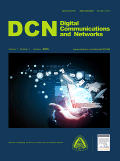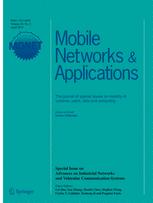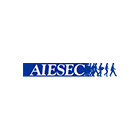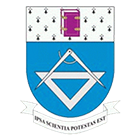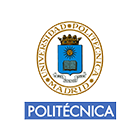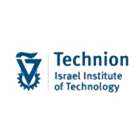INVITED TALKS
Massive multiple access in wireless networks - Is coordination needed ?
Krishna Narayanan
Abstract:
Currently, there is interest in the design of multiple access schemes for large-scale wireless networks where coordination among users is difficult to acquire and maintain. This interest appears to be fueled by applications such as machine-to-machine communications, interactive satellite communications and large-scale wireless sensor networks/RFID. We are primarily interested in answering two questions in this talk - (i) how to design good random access protocols for such large-scale networks and (ii) Is there a throughput penalty due to the lack of coordination among users ?
Traditional random access protocols such as slotted ALOHA suffer from a severe loss in throughput due to the lack of coordination (the throughput efficiency of slotted ALOHA is 37\%). This inefficiency is primarily because collided packets are discarded in traditional slotted ALOHA. In this talk, we consider a paradigm where each user in the network transmits their packets many times according to a carefully chosen probability distribution. At the receiver, the collided packets are not discarded and an iterative collision resolution algorithm is used to recover the original packets. We will derive the optimal probability distribution in this talk and show that the throughput of slotted ALOHA can be increased to 100\%. This essentially means that there is no penalty due to the lack of coordination among users at least for the specific networks considered in this talk.
We will point out interesting connections between the random multiple access problem and problems traditionally considered in coding theory as such message passing on graphs, rateless codes, raptor codes and physical layer network coding.
Biography :
Krishna Narayanan received the Ph.D. degree in electricalengineering from Georgia Institute of Technology in 1998 and since then he has been with the department of electrical and computer engineering at Texas A&M University, where he is currently a professor. His research interests are in coding theory, information theory, joint source-channel coding and signal processing with applications to wireless networks and data storage. His current research interests are in understanding the role of structured codes in multi-terminal information theory, universal codes for multi-user communication, spatially-coupled codes, polar codes, product codes and their variants, design of uncoordinated multiple access schemes and in exploring connections between sparse signal recovery and coding theory.
He was the recipient of the NSF career award in 2001. He also received the 2006 best paper award from the IEEE technical committee for signal processing for data storage for his work on soft decision decoding of Reed Solomon codes. He served as the area editor (and as an editor) for the coding theory and applications area of the IEEE Transactions on Communications from 2007 until 2011. He also served as one of the general chairs for the 2007 ITW in Lake Tahoe and as one of the technical program chairs for the 2010 ISIT in Austin. He was elected as Fellow of the IEEE for contributions to coding for wireless communications and data storage. He has won several awards within Texas A&M university including the 2012 college level teaching award.
Silicon-plus Photonics and the applications
Daoxin Dai
Centre for Optical and Electromagnetic Research, State Key Laboratory for Modern Optical Instrumentation, Zhejiang University, China;
Email: [email protected]
Abstract :
Silicon photonics has become very popular because of their compatibility with mature CMOS technologies with excellent processing control, low cost, and high volume processing. On the other hand, it is still very difficult to realize various photonic functional devices for the large-scale photonic integration by utilizing the material system of pure silicon due to the intrinsic properties of silicon. As an effective alternative, silicon-plus photonics provides a strong platform for various applications by adding other materials on silicon to complement the disadvantages of silicon. First, metal is a kind of material used widely for silicon photonics not only to play the role of electrodes/micro-heaters but also to develop silicon hybrid nanoplasmonics (which enables deep sub-wavelength optical confinement as well as long propagation distance). Furthermore, the silicon-metal structure can be also used to realize a long-wave photodetector by utilizing the photo-thermo-resistance effect. Dielectric materials, including semiconductors (e.g., III-V, Ge, graphene) and polymers (with high nonlinear coefficients), have been also developed very well to work together with silicon photonics, particularly for realizing lasers, amplifier, photodetecors, electro-optical modulators, and all-optical modulators. In this paper, we discuss the concept of silicon-plus photonics and the applications.
Keywords: silicon-plus, photonics, graphene, metal.
Biography :
 Daoxin Dai received the B. Eng. degree from Department of Optical Engineering, Zhejiang University, China, and the Ph.D. degree from KTH, Sweden, in 2000 and 2005, respectively. Then he joined Zhejiang University as an assistant professor and became an associate professor in 2007, a full professor in 2011. He worked at the University of California at Santa Barbara as a visiting scholar from 2008 until 2011. His research interests include silicon photonic integrated devices and the applications. Dr. Dai has published >120 refereed international journals papers (including 7 invited review papers). He has been invited to give more than 20 invited talks and served as the program committee member or session chair for some top international conferences. Dr. Dai is serving as the Associate Editor of the Journals of “IEEE Photonics Technology Letters”, “Optical and Quantum Electronics” and “Photonics Research”.
Daoxin Dai received the B. Eng. degree from Department of Optical Engineering, Zhejiang University, China, and the Ph.D. degree from KTH, Sweden, in 2000 and 2005, respectively. Then he joined Zhejiang University as an assistant professor and became an associate professor in 2007, a full professor in 2011. He worked at the University of California at Santa Barbara as a visiting scholar from 2008 until 2011. His research interests include silicon photonic integrated devices and the applications. Dr. Dai has published >120 refereed international journals papers (including 7 invited review papers). He has been invited to give more than 20 invited talks and served as the program committee member or session chair for some top international conferences. Dr. Dai is serving as the Associate Editor of the Journals of “IEEE Photonics Technology Letters”, “Optical and Quantum Electronics” and “Photonics Research”.
QoSand Capacity of Vehicular Ad Hoc Networks for Safety Related Services
By Xiaomin Ma
Abstract:
Transportation systems are designed to transport people from one place to another as safely and efficiently as possible. Unfortunately, many accidents and fatalities occur on the road every day. Recently, the development of the Intelligent Transportation System (ITS) has been advancing towards safe and smooth driving without delay. Wireless communication systems are expected to play a pivotal role in the ITS safety-related applications. The Dedicated Short Range Communication (DSRC) standard with 75 MHz at 5.9 GHz band was projected and licensed to support low-latency wireless data communications between vehicles and from vehicles to roadside units in the USA. It is being standardized as IEEE 802.11p.Vehicle safety-related communication services require reliable and fast message delivery in vehicular ad hoc networks (VANETs). The potential safety applications of DSRC require a robust dissemination of safety messages with stringent delay and reliability requirements. Research on enhancing current DSRC systems to meet the given quality of service (QoS) for safety applications is going on.
In this presentation, QoSand capacity issues in VANETsfor safety-related broadcast servicesare addressed. First, a short overview of IEEE 802.11p for ITS and challenges of VANETsfor safety applications is given. Second, existing QoS metrics to characterize VANET behavior for the safety applications and analytical models for deriving the QoS metrics are summarized and compared. Then, new QoS metrics and requirements that are functions of awareness range, time window, and vehicle driving environment and direction to reflect and distinguish features of individual safety applications with higher granularity are introduced and explained. Consequently, with these new QoS metrics, current DSRC system settings or new protocols can be objectively evaluated and designed. Third, Novel analytic modeling of current VANET is conducted to quantify DSRC channel capacity for safety applications and estimate spectrum resource gap between what the current DSRC VANET could provide and what is needed for assurance of required QoS for all safety applications. Finally, some potential solutions to optimizing and improving capacity of vehicular networks for safety applications with required QoS are suggested. This researchwill speed up development and dissemination of next-generation cars equipped with wireless communication capability.
Biographical Sketch
 XiaominMa (M’03-SM’08) received B.E. and M.E. degrees in electrical engineering in 1984 and 1989, respectively. He got the Ph.D. degree in Information engineering at the Beijing University of Posts & Telecommunications, China, in 1999. From 2000 to 2002, he was a post-doctoral fellow in the Department of Electrical and Computer Engineering, Duke University, USA. He had been teaching in the field of Electrical and Computer Engineering as an assistant professor and associate professor at the Petroleum University of China for about eight years. Then, he worked in a telecommunication company (Huawei in Beijing) for a short time. Currently, he is a professor in the Department of Engineering at Oral Roberts University in U.S. He has published over 100 papers in peer-reviewed journals and conferences. He also holds a US patent. He is the recipient of Best Paper AwardinIEEE International Conference on Network Infrastructure and Digital Content. He is in Editorial Board of International Journal of Vehicular Technology, Hindawi Publish House. Also, he is a guest editor of Special Issue on "Reliable and secure VANETs" in IEEE Transactions on Dependable and Secure Computing. His research interests include stochastic modeling and analysis of computer and communication systems, physical layer and MAC layer of vehicular ad hoc wireless networks, computational intelligence and its applications to coding, signal processing, and control, and Quality of service (QoS) and call admission control protocols in wireless networks. He is (or was) PI, Co-PI or project leader in several projects sponsored by NSF, NSF EPSCoR, Motorola, Chinese NSF, AFOSR, and ARO, etc. Currently, he is a senior member of the IEEE.
XiaominMa (M’03-SM’08) received B.E. and M.E. degrees in electrical engineering in 1984 and 1989, respectively. He got the Ph.D. degree in Information engineering at the Beijing University of Posts & Telecommunications, China, in 1999. From 2000 to 2002, he was a post-doctoral fellow in the Department of Electrical and Computer Engineering, Duke University, USA. He had been teaching in the field of Electrical and Computer Engineering as an assistant professor and associate professor at the Petroleum University of China for about eight years. Then, he worked in a telecommunication company (Huawei in Beijing) for a short time. Currently, he is a professor in the Department of Engineering at Oral Roberts University in U.S. He has published over 100 papers in peer-reviewed journals and conferences. He also holds a US patent. He is the recipient of Best Paper AwardinIEEE International Conference on Network Infrastructure and Digital Content. He is in Editorial Board of International Journal of Vehicular Technology, Hindawi Publish House. Also, he is a guest editor of Special Issue on "Reliable and secure VANETs" in IEEE Transactions on Dependable and Secure Computing. His research interests include stochastic modeling and analysis of computer and communication systems, physical layer and MAC layer of vehicular ad hoc wireless networks, computational intelligence and its applications to coding, signal processing, and control, and Quality of service (QoS) and call admission control protocols in wireless networks. He is (or was) PI, Co-PI or project leader in several projects sponsored by NSF, NSF EPSCoR, Motorola, Chinese NSF, AFOSR, and ARO, etc. Currently, he is a senior member of the IEEE.
Lilin Yi
Associate Professor, Shanghai Jiao Tong University
Abstract :
We present 25-Gb/s operation of a commercial 10-GHz directly modulated DFB laser (DML) and PIN. Non-return to zero on-off-keying (NRZ-OOK) instead of advanced modulation format is used, which significantly simplifies the digital signal processing (DSP) module.40-km standard single mode fiber (SSMF) transmission is demonstrated with bit error ratio (BER) lower than 1×10-3, which provides a cost-effective solution for 4×25-Gb/s TWDM-PON systems.
Biography :
Lilin Yi has received the BS(2002) and MS(2005) from Shanghai Jiao TongUniversity (SJTU), China. He achieved the Ph.D degree from Ecole NationaleSupérieure des Télécommunications (ENST, currently named as TelecomParisTech), France and SJTU, China on Mar. and Jun. 2008 respectively as ajoint-educated Ph.D student. After graduation, he worked at Avanex R&D center as a product development manager, presided projects of Alcatel-Lucent 100G novel optical amplifier and Avanex next generation optical amplification platform. Since 2010, he joined the State Key Laboratory of Advanced Optical Communication Systems and Network, SJTU. His main research topics include optical signal processing and access networks. Dr. Lilin Yi is the author or coauthor of more than 100 papers in peer-reviewed journals and conferences, including more than 10 invited papers, which have been cited by more than 800 times (Google Scholar). Dr. Yi has achieved the awards of “National excellent PhD thesis” in China and "National Science Fund for Excellent Young Scholars of China". Currently he is the member of IEEE photonics Society and OSA. He is the track/symposium co-chairs of IEEE CSN&DSP2012/ICCC2014/OECC2015, and the local organization committee secretary of ACP2014.
Feng Xue, Ph.D., Associate Professor
Department of Electronic Engineering, Tsinghua University, Beijing 100084, China
E-mail: [email protected]
Abstract:
In this work, aiming to increase the data-carrying capacity of wireless optical interconnect, we have proposed an optical orbital angular momentum (OAM) encoding and decoding method. As the first step, encoding and decoding OAM on optical light with integrated structure on silicon chip are demonstrated. The optical OAM is generated by a ring cavity with one input bus waveguide and several download waveguides. Since the OAM order only depends on the mode order of ring cavity, optical OAM can be readily encoded by tuning the refractive index of silicon material. Based on such an encoding approach with multi-ary symbol, the data density can be significantly increased by employing OAM as an additional dimension. Moreover, the encoded OAM beam can be easily decoded by using gratings and Mach-Zehnder interferometers.
Biography:
Dr. Xue FENG received his BS, MS and PhD degrees in Electrical Engineering from Tsinghua University in 1999, 2002 and 2005, respectively. Since 2005, he has been working in Department of Electronic Engineering, Tsinghua University, Beijing, China. His major research interest is focused on micro/nano-structure optoelectronics, silicon photonics, and integrated optoelectronic devices. As author and co-author, he has published more 100 journal or conference papers.







